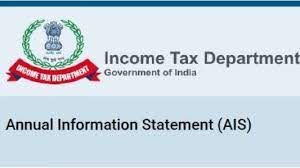An Annual Information Statement (AIS) is used to maintain details of all the taxpayers for a particular year. It contains all the data regarding taxpayers’ incomes, their financial transactions, income-tax proceedings, tax details, and more. With the AIS, the government maintains both reported value and modified value for each type of information.
Here’s all you need to know about the AIS.
What Is AIS?
The AIS was introduced by the Income Tax Department in November 2021. It comprises the data of all financial transactions carried out by a taxpayer in a financial year. The AIS is essentially a comprehensive statement containing details of 46 financial transactions, including income, investment, and expenditure. The authorities must upload this data in the Form 26AS in a taxpayer’s registered account.
The objectives of the AIS are:
- The AIS will display complete information to a taxpayer while capturing online feedback.
- The government expects the AIS to promote voluntary compliance and advance prefilling of the ITR.
- The AIS will identify non-compliance from the taxpayers and deter it.
What type of information does the AIS display?
The AIS focuses on Form No. 26AS for information. It may relate to some of the following types of information:
- Information of TDS and TCS: , Information value and Information description of TDS/ TCS are included in the AIS.
- Specified Financial Transactions (SFT): The reporting entities under SFT, including SFT code, Information value and Information description, can be found in the AIS.
- Tax Payment: All Tax payment data, such as self-assessment tax and advance tax, are available in the AIS.
- Refund and demand: Information regarding refund initiated (AY and amount) and demand raised and during a financial year is provided in the AIS.
- Other Information: Information on data about interest on refund, purchase of foreign currency, Annexure-II salary, etc are also provided in the AIS.
Features of the AIS
The AIS contains new information such as interest, dividend, securities transactions, mutual fund transactions, foreign remittance information, etc.
A summary of the AIS information is provided in the Taxpayer Information Summary (TIS) for ease of filing return (pre-filling will be enabled soon in a phased manner).
The taxpayers shall also be able to submit online feedback on the AIS’s information and download information in multiple formats such as PDF, JSON, and CSV.
Additionally, the AIS Utility will enable taxpayers to view the AIS and upload feedback offline.
How to check your AIS?
Step 1: Login to the income tax e-filing portal at www.incometax.gov.in and go to ‘Services’ and then select ’Annual Information Statement’.
Step 2: Click on the ‘Proceed’ button and you will be redirected to the compliance portal.
Step 3: Here, you can view the Taxpayer Information Summary (TIS) and the Annual Information Statement (AIS) on the AIS home page.
Step 4: Select the relevant financial year, and view the Taxpayer Information Summary (TIS) or the Annual Information Statement (AIS) by clicking on the relevant tiles.
Step 5: You can view the screenshot of the TIS summary or download the AIS and the TIS by clicking on the download icon. The TIS can be downloaded in PDF format while the AIS can be downloaded in PDF, CSV or JSON formats
The PDF file is password protected. The password is a combination of the PAN (in upper case) and the date of birth for individual taxpayer or date of incorporation/formation for a non-individual taxpayer in the format DDMMYYYY (no space).
 Annual Information Statement (AIS) contains extensive information for a taxpayer displayed in Form 26AS.
Annual Information Statement (AIS) contains extensive information for a taxpayer displayed in Form 26AS.